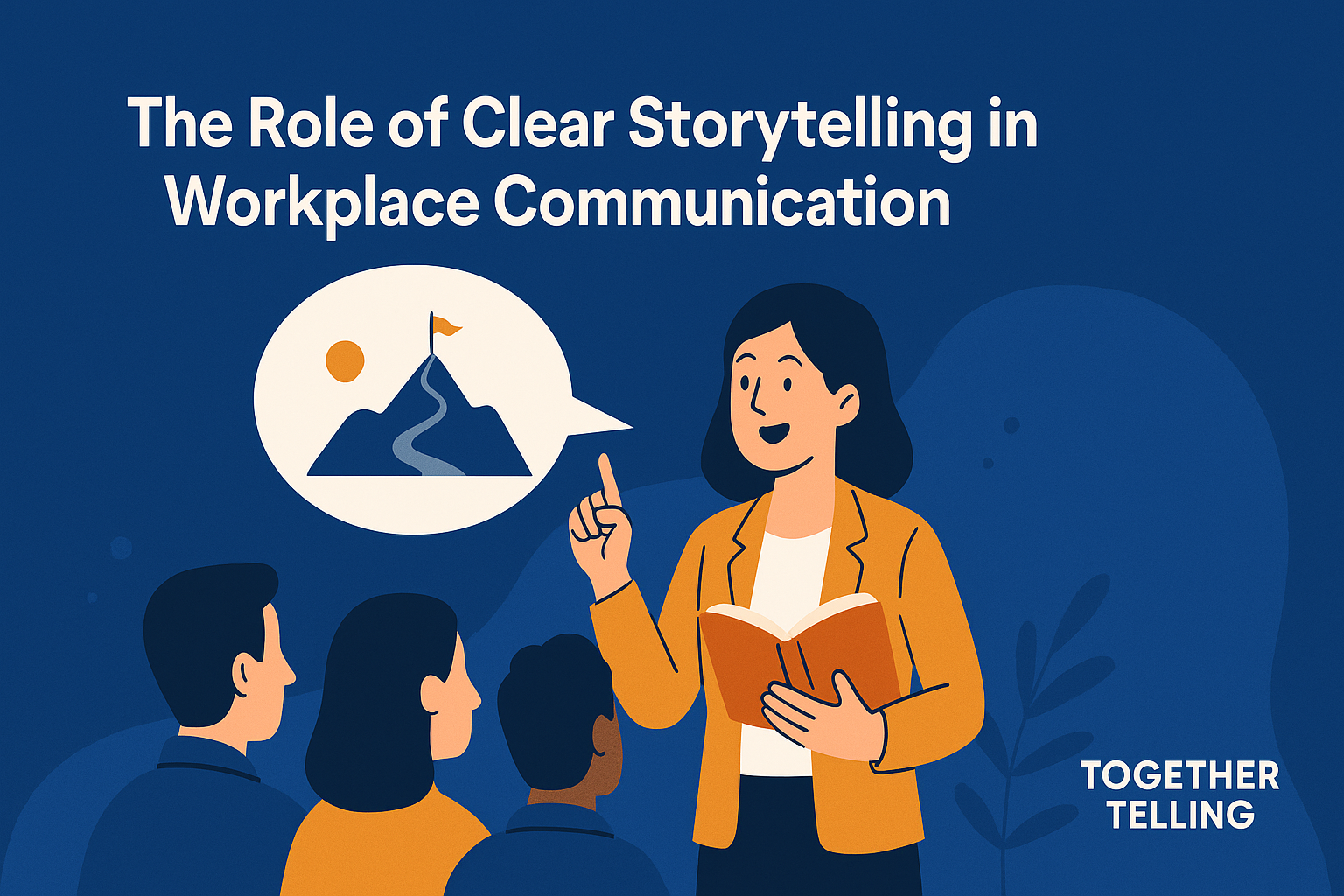
Let me ask you this: When was the last time you remembered a pie chart from a meeting? Now, when was the last time you remembered a good story someone told in that same meeting?
Exactly.
Storytelling isn’t just for campfires or TED Talks. In the workplace, it’s a superpower that transforms boring updates into memorable messages, makes complex ideas digestible, and—let’s face it—keeps people awake in meetings.
Yet, most organizations rely on bullet points and endless reports, wondering why no one seems to remember what was said two minutes later. Spoiler alert: Humans are wired for stories, not spreadsheets.
Let’s break down why storytelling matters and how you can use it to become the most engaging communicator in any boardroom.
Why Storytelling Matters in Communication (It’s Science, Not Just Fluff)

1. Increases Retention of Information
People forget statistics, but they remember stories. Research shows that our brains are 22 times more likely to remember information when it’s wrapped in a story.
Example: Telling your team, “Sales are down 15%” gets a nod (and a yawn). But say, “Imagine we’re in a boat that’s slowly taking on water—we’re still afloat, but if we don’t patch the hole soon, we’re sinking”—and suddenly, you have their attention.
The Takeaway: Stories give dry data context and meaning, making it stick.
2. Helps Convey Complex Ideas Effectively
Ever tried explaining a new system implementation or product launch and got blank stares? That’s because most people don’t process complexity well—unless you give them something relatable.
Example: Instead of diving into the tech specs, try: “Think of this new software as your assistant—handling the repetitive stuff so you can focus on what matters.”
The Takeaway: A relatable story turns complexity into clarity.
3. Encourages Emotional Engagement with Messages
Let’s be real, corporate communication is often emotionally bankrupt. It’s facts, figures, and formalities. But people don’t act based on facts alone—they act based on how they feel about those facts.
Example: When pitching a new project, don’t just explain the ROI. Tell the story of a customer whose problem you’re solving. That emotional connection drives buy-in faster than any spreadsheet.
The Takeaway: Stories humanize your message and spark action.
How Together Telling Uses Storytelling for Better Communication
At Together Telling, we know that storytelling isn’t a “nice-to-have”—it’s the secret weapon for leaders who want their message to land, stick, and inspire action.

1. Training Leaders on Effective Storytelling Techniques
We help leaders swap jargon for stories, teaching them to:
Use personal anecdotes that build trust.
Frame messages as narratives with a clear beginning, conflict, and resolution.
Incorporate visual storytelling (because sometimes, a picture is worth a thousand words).
Result: Leaders who sound less like robots and more like human people want to follow.
2. Helping Organizations Integrate Storytelling into Presentations and Meetings
We work with teams to build storytelling into every layer of communication:
Kickoffs that explain the “why” behind projects, not just the “what.”
Client pitches that connect emotionally, not just rationally.
Internal updates that make people care, not just skim.
Result: Meetings that people remember—and dare we say—look forward to.

Final Thoughts: Data Tells, but Stories Sell
You can have the best product, the smartest strategy, and the most detailed report—but if you can’t tell a compelling story, none of it matters.
In today’s fast-paced, attention-deficit world, storytelling is your unfair advantage. It helps your team connect, remember, and act.
At Together Telling, we’re here to help you transform your communication from “meh” to memorable.
Backlink Source:
Harvard Business Review: The Power of Storytelling

